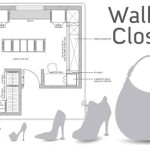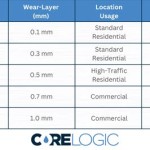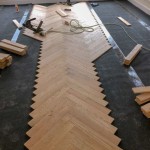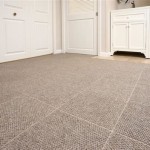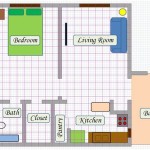Hardwood Floor Repair Fort Worth: Restoring Beauty and Value
Hardwood floors are a desirable feature in many Fort Worth homes and businesses, adding warmth, character, and value to the property. However, daily wear and tear, accidents, and environmental factors can take a toll, leading to various types of damage. Addressing these issues promptly with professional hardwood floor repair in Fort Worth is crucial for maintaining the floor's aesthetics, structural integrity, and longevity.
This article will provide a comprehensive overview of common hardwood floor problems, repair techniques, and considerations for choosing a qualified flooring professional in the Fort Worth area. Understanding the intricacies of hardwood floor repair empowers property owners to make informed decisions and ensure their floors remain a beautiful and functional asset for years to come.
Identifying Common Hardwood Floor Problems
Recognizing the specific type of damage affecting a hardwood floor is the first step in determining the appropriate repair strategy. Several common problems can arise, each requiring a tailored approach.
Scratches and Scuffs: These are often the most superficial types of damage, resulting from everyday foot traffic, moving furniture, or pet activity. While they may seem minor, scratches and scuffs can dull the floor's finish and detract from its overall appearance. The severity of the scratches will dictate the repair method needed, ranging from simple touch-up techniques to more involved refinishing.
Dents and Gouges: These deeper forms of damage typically occur when heavy objects are dropped or dragged across the floor. Dents leave indentations in the wood, while gouges remove a portion of the material altogether. Repairing dents and gouges often involves filling the damaged area with wood filler or patching in a new piece of wood.
Water Damage: Hardwood floors are particularly vulnerable to water damage, which can manifest in various forms, including cupping, crowning, and discoloration. Cupping occurs when the edges of the boards rise above the center, while crowning is the opposite, with the center of the boards rising. Discoloration can range from light staining to dark, unsightly spots. Prompt and effective water damage restoration is critical to prevent further deterioration and potential mold growth.
Loose or Squeaky Boards: Over time, hardwood boards can become loose due to changes in humidity, improper installation, or subfloor issues. Loose boards often lead to squeaking, which can be both annoying and indicative of a deeper problem. Addressing loose boards involves re-securing them to the subfloor using nails, screws, or adhesive.
Gaps Between Boards: Seasonal changes in humidity can cause hardwood floors to expand and contract, leading to gaps between the boards. While some gapping is normal, excessive gaps can be unsightly and create opportunities for dirt and debris to accumulate. Depending on the severity, gaps can be filled with wood filler or thin strips of wood.
Fading and Discoloration: Exposure to sunlight can cause hardwood floors to fade or change color over time. This is particularly noticeable in areas that receive direct sunlight. Refinishing the floor or applying a UV-resistant coating can help to restore the original color and protect against further fading.
Damaged Finish: The finish on a hardwood floor protects the wood from wear and tear and enhances its appearance. Over time, the finish can become scratched, worn, or dull. Refinishing the floor is often necessary to restore the finish and protect the wood.
Hardwood Floor Repair Techniques
The choice of repair technique depends on the type and extent of the damage. Skilled hardwood floor repair professionals in Fort Worth possess a range of techniques to address various issues effectively.
Screening and Recoating: This is a less invasive alternative to full refinishing, suitable for floors with minor scratches or a dull finish. The process involves lightly abrading the existing finish (screening) to create a smooth surface for a new coat of finish to adhere to. Screening and recoating can revitalize the floor's appearance without removing the existing stain.
Refinishing: This involves sanding down the existing finish and stain to reveal the bare wood, followed by applying a new stain and multiple coats of finish. Refinishing is ideal for floors with significant scratches, dents, or discoloration. It allows for a complete transformation of the floor's appearance and provides a fresh layer of protection.
Wood Filler Repair: For dents, gouges, and small gaps, wood filler can be used to fill the damaged areas. The filler is typically tinted to match the color of the surrounding wood. Once the filler is dry, it is sanded smooth and finished to blend seamlessly with the existing floor.
Board Replacement: When a board is severely damaged or beyond repair, it may need to be replaced. This involves carefully removing the damaged board and replacing it with a new one that matches the existing wood in species, color, and grain pattern. Board replacement requires precision and skill to ensure a seamless repair.
Subfloor Repair: In some cases, hardwood floor problems may be caused by issues with the subfloor, the layer of material underneath the hardwood flooring. If the subfloor is uneven, damaged, or unstable, it can affect the performance of the hardwood floor. Subfloor repair may involve leveling, reinforcing, or replacing sections of the subfloor.
Crack Repair: Small cracks can be filled with wood filler and sanded smooth. For larger cracks, epoxy-based fillers or wood shims may be necessary to provide a more stable and lasting repair.
Sanding and Blending: This technique is often used to blend repairs seamlessly with the surrounding floor. Sanding ensures a smooth transition between the repaired area and the existing floor, while blending techniques help to match the color and texture of the wood.
Choosing a Hardwood Floor Repair Professional in Fort Worth
Selecting the right professional for hardwood floor repair in Fort Worth is crucial for achieving optimal results and ensuring the longevity of the floor. Several factors should be considered during the selection process.
Experience and Expertise: Look for a company with a proven track record of successful hardwood floor repairs. Inquire about their experience with different types of hardwood flooring and repair techniques. A seasoned professional will be able to accurately assess the damage and recommend the most appropriate repair strategy.
Licensing and Insurance: Ensure that the company is properly licensed and insured. This protects both the homeowner and the contractor in case of accidents or damages during the repair process. Verify their credentials with relevant licensing boards and insurance providers.
Reputation and References: Check online reviews and ask for references from previous clients. A reputable company will have a strong online presence and be willing to provide contact information for satisfied customers. Contacting references can provide valuable insights into the company's workmanship, professionalism, and customer service.
Detailed Estimates: Obtain a detailed written estimate that outlines the scope of work, materials to be used, and total cost. A comprehensive estimate should also include a timeline for completion and any warranty information. Be wary of estimates that seem too good to be true, as they may indicate substandard materials or workmanship.
Knowledge of Hardwood Flooring: The professional should demonstrate a thorough understanding of hardwood flooring, including different wood species, finishes, and installation techniques. They should be able to answer questions about the properties of different types of wood and recommend the best options for the homeowner's needs and budget.
Use of Quality Materials: Inquire about the quality of materials used in the repair process. Using high-quality wood filler, finishes, and adhesives is essential for ensuring a durable and long-lasting repair. Opt for companies that use reputable brands and offer warranties on their materials.
Dust Control Measures: Sanding hardwood floors can generate a significant amount of dust. Choose a company that utilizes dust control measures, such as dust containment systems and vacuum sanding equipment, to minimize dust and debris during the repair process. This helps to protect the homeowner's health and prevent damage to furniture and other belongings.
Communication and Professionalism: Effective communication is essential for a successful repair project. The contractor should be responsive to inquiries, provide clear and concise explanations, and keep the homeowner informed of progress throughout the repair process. Professionalism in all aspects of the job, from initial consultation to final cleanup, is a sign of a reputable and reliable company.
By carefully considering these factors, property owners in Fort Worth can choose a qualified hardwood floor repair professional who can restore their floors to their former beauty and value.

Hardwood Floor Refinishing In Dallas Fort Worth Free Quotes

Proper Hardwood Flooring Repair Removal In Dallas Fort Worth

Hurst Sand Free Wood Refinishing Tx

Hardwood Floor Repair

Dr Floor Hardwood Installation Restoration Updated July 2025 17 Photos 16 Reviews 208 Sandy Ln Fort Worth Flooring Phone Number Yelp

Hurst Sand Free Wood Refinishing Tx

Flooring Install And Repair Fort Worth Tx Bransom Floor Service Inc

Hurst Sand Free Wood Refinishing Tx

Hardwood Floor Refinishing In Dallas Fort Worth Free Quotes

Hernandez Hardwood Floors Inc Premier Source For Wood Floor Services
